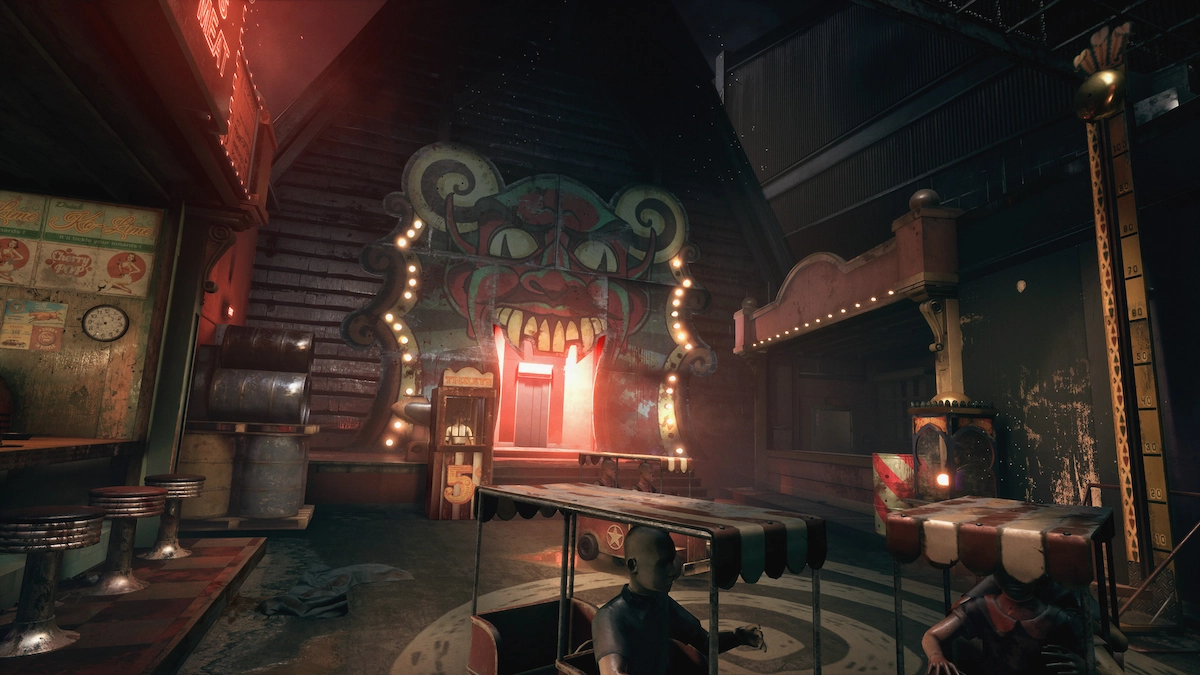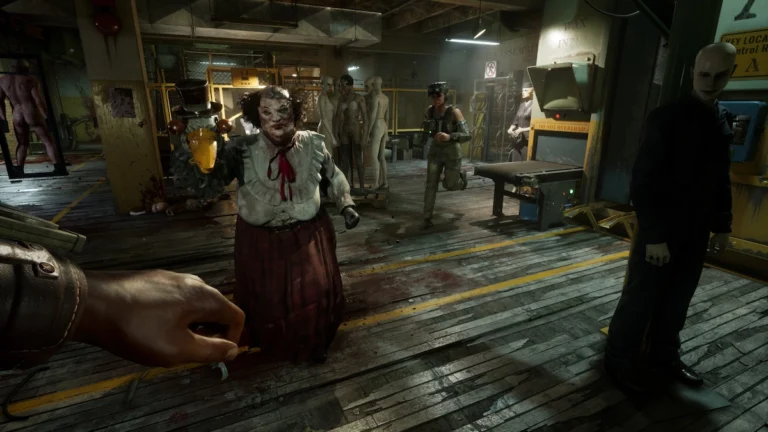Without a doubt, the Outlast series is one of the most terrifying franchises in the history of video games. These games never shy away from graphic violence, grotesque visuals, sudden jump scares, or deep, psychological horror. Instead of giving players power, they throw them into terrifying scenarios completely defenseless, heightening the fear and tension with every step.
I still remember how disturbed I was when I reviewed Outlast 2. The atmosphere of dread completely took over my mood for days. And now, we have Outlast Trials — the latest entry in the series, which brings a new twist while keeping the core horror identity intact.
A New Formula: Co-op in a Horror Game?
Unlike the first two single-player entries, Outlast Trials focuses on 4-player co-op gameplay. This shift raises an important question:
Can a cooperative horror experience still be terrifying?
The answer is a firm yes — and here’s why.
A Dark and Disturbing Setting
What surprised me most about Outlast Trials was its storytelling. In the first two games, you followed well-written characters through linear narratives. But Outlast Trials takes a different approach — one that’s darker and more unsettling.
The game is set during the Cold War era. You play as a test subject — usually a homeless or troubled person who has “volunteered” for a secret government experiment. These people are transported to a facility where they’re stripped of their identities, strapped with night vision cameras, and subjected to psychological torture in the name of science.
Your first mission includes destroying your personal identification and undergoing brainwashing. From there, you wake up in your assigned room in the facility hub — and the terrifying trials begin.
The Narrative Hits Hard

While the game is built for co-op, the narrative is shockingly bleak. You participate in sadistic tests, constantly monitored by scientists from behind glass walls. Corpses litter the environments, and propaganda posters line the walls with twisted messages. It’s an effective portrayal of a dystopian Cold War nightmare — and while the story could go deeper, even this surface-level narrative hits hard.
Missions, Objectives, and Pure Terror
Outlast Trials consists of several large missions and smaller trials. Each one takes place in different, creepy locations. You’re tasked with solving objectives while being hunted by horrifying enemies.
Now let’s get back to the main question:
Is the game still scary?
Absolutely. Terrifying, even.
You can play solo or with friends, but when playing alone, the fear is as intense as ever. Imagine sneaking toward an objective when suddenly, a horrific creature enters the room. And just like in classic Outlast fashion — you have no weapons. Your only options are run and hide.
Sometimes, even hiding isn’t safe. You might open a locker to hide, only to find that a twisted monster is already hiding inside — cue the jump scare from hell.
More Than Just Jump Scares
That’s just one kind of fear Outlast Trials delivers. While the night vision camera remains your best friend, and battery management is still stressful, this game has more well-lit areas than its predecessors.
At first, this seems comforting. But in reality, it makes things worse: enemies can now spot you more easily. Stealth becomes even more critical, but it’s also more challenging — broken glass, hanging cans, and squeaky doors all betray your position.
And if you’re squeamish, be warned: this game pulls no punches. In one of the first missions, you watch a person get shredded alive in a giant meat grinder. Graphic, disturbing, unforgettable.
Single Player vs. Co-op: Two Kinds of Fear
Yes, playing in co-op slightly reduces the intensity of fear. It’s only natural — having friends around makes things feel safer. But from a gameplay perspective, Outlast Trials becomes one of the best multiplayer horror experiences you can have.
Even with random players, the need for team coordination brings tension. Completing missions as a group — with shared scares and sudden enemy attacks — feels incredibly rewarding. And the game introduces a new kind of fear:
The fear of being the one who messes up and gets your entire team caught.
Progression, Upgrades, and Useful Items
As you complete missions and challenges, you level up and earn resources. These can be used to:
- Buy decorative items for your room in the hub
- Purchase useful items from vendors
- Unlock tools that help in missions
Some items heal you or your teammates. Others stun enemies or restore sanity, which is crucial — if your mental state gets too unstable, a specific enemy starts hunting you. And believe me, this enemy is absolutely terrifying.
From crazy cops to deranged female killers, the enemy designs are nightmarishly creative — keeping you on edge at all times. That said, the AI can be inconsistent. Sometimes enemies behave strangely — like losing sight of you just steps away in the dark — but it doesn’t happen too often.
Visuals, Audio, and Unreal Engine 4
Outlast Trials is built with Unreal Engine 4, but it looks better than many games developed with UE5. The lighting design is one of the game’s strongest tools for building fear — combining beauty with dread in every corner.
Environmental details, sound effects, and music timing all work together to keep your nerves frayed. Technically, the game runs well — even on weaker systems — and the servers are stable, offering a good online experience even in regions with poor connectivity.
Endgame Content and Replay Value
Beyond the core missions, Outlast Trials offers endgame content that keeps players coming back. The missions are varied, and new content continues to be added. If you’re looking for a long-term horror co-op game, this one delivers.
Final Verdict: Outlast at Its Best, Again
Despite a few minor issues like underdeveloped storytelling or occasional AI bugs, Outlast Trials is a strong addition to the franchise. It delivers genuine fear, whether you play alone or with friends, and the co-op mechanics don’t water down the horror — they just shift it into a new form.
This game proves that horror games can evolve, offering deeper experiences without losing their identity.
